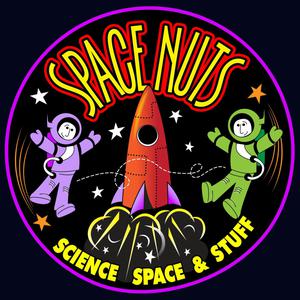Embark on another cosmic journey with your favorite celestial explorers, Andrew Dunkley and Professor Fred Watson, in this insightful Q&A episode of Space Nuts. This time, the mysteries of the outer solar system take center stage as we delve into the elusive Planet Nine. Duncan from Weymouth, Dorset, ponders whether a rogue planet might have once danced through our neighborhood, stirring the orbits of distant objects before continuing on its cosmic path. Could this explain the peculiar movements without the need for a ninth planet?
Next, Rusty revisits his solar pergola concept, but with a twist. Imagine a constellation of satellites, each casting a penumbral shadow upon Earth, designed to reduce solar exposure by a subtle 2%. With advances in technology, could this be the geoengineering marvel we deploy within a decade to temper our planet's fever?
David from Seguin, Texas, presents us with a tantalizing "what if": If you could step foot on any exoplanet, which would it be? Andrew and Fred share their interstellar real estate preferences, revealing the allure of Earth-like worlds and the practical considerations of cosmic travel.
Lastly, we're tackling some homework from our inquisitive listeners. Wayne's curiosity about supernovas and gravitational waves leads to a discussion on cosmic symmetry, while Lee's question about InSight's ability to triangulate Marsquake epicenters unveils the intricate modeling of the Red Planet's inner structure.
So, fasten your seatbelts for a voyage through the wonders of space science, where questions spark discovery and the universe's secrets are just waiting to be unlocked. Don't forget, your questions might just be the next puzzle piece in our grand cosmic understanding, so keep them coming!
For more interstellar intrigue and to continue feeding your space curiosity, subscribe to Space Nuts on your preferred podcast platform. Until our next celestial navigation, remember to look up and let your imagination soar through the infinite expanse!
For more Space Nuts visit
www.spacenuts.io or our HQ at
www.bitesz.com.
(00:00) Andrew Dunkley: This is the separated second half of Space Nuts q&a
(02:23) Our first question comes from a regular Duncan. Just wondering about planet nine episode
(03:47) Andrew says rogue planet could be caused by passing star or other interference
(08:10) The solar system is very difficult to understand without planet nine, says Mike Brown
(10:26) Rusty suggests solar pergola could help solve climate crisis
(17:03) Plus it increases our classification as a. Civilization in doing so
(17:29) What if y'all could step foot on any planet outside our solar system
(21:34) Whether or not a supernova can cause a gravitational wave was asked recently
(26:36) Professor Fred Watson and Huw in the studio for Space Nuts podcast
Become a supporter of this podcast:
https://www.spreaker.com/podcast/space-nuts--2631155/support.
